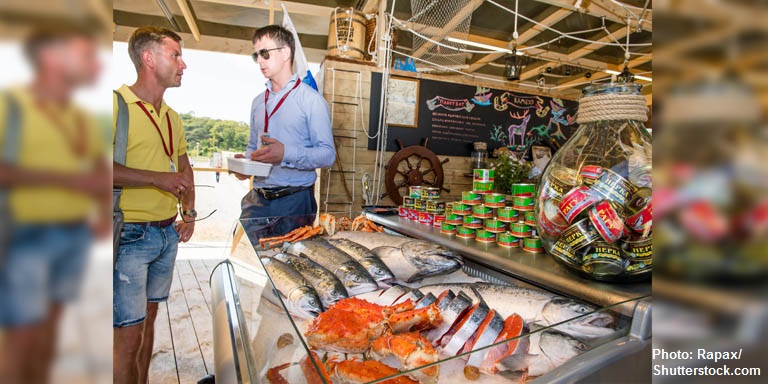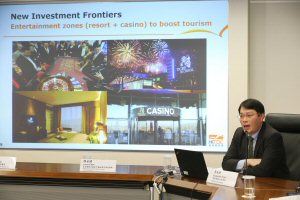
Aquaculture and tourism potential
Mr Chan said Hong Kong business can also consider importing a range of products from the FEFD. “The district has access to the waters of North Pacific, which are a paradise for cold-water seafood such as crabs and scallops. A range of cosmetics and health supplements has also been developed including face masks derived from sea cucumbers and medicinal products made using the chaga mushroom.”The FEFD is also planning to develop an entertainment zone, incorporating resorts and casinos, to boost tourism. “There are plenty of opportunities for Hong Kong companies to participate in the development of the tourism industry in the FEFD. In addition to investment and project management, they can also provide marketing support for the FEFD to promote its tourism to potential Asian visitors,” Mr Chan explained.
ASEAN e-commerce opportunities
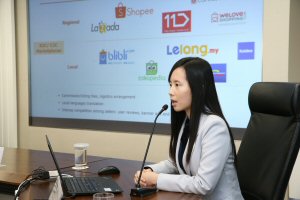
With their young and tech-savvy populations, countries such as Thailand, Malaysia and Indonesia are seeing rapid growth in business-to-consumer (B2C) e-commerce. “The ASEAN middle-class is increasingly familiar with shopping online or through multi-channel platforms for travel and leisure, fashion and entertainment, as well as consumer electronics, health, beauty and wellness products and services, and their purchase decisions are heavily affected by online reviews,” HKTDC Economist Jacqueline Yuen said.The market is fragmented and there is keen competition among e-commerce platforms; social media is growing in popularity and is an ideal selling platform for small suppliers and new brands, Ms Yuen said. She advised Hong Kong traders to consider penetrating these markets through the omni-channels provided by department stores or speciality shops, or the B2C platforms and social media shops.She also mentioned the rise of “mompreneurs” – women who share experiences with other new mothers at the same time as promoting baby and maternity items. “Breastfeeding is becoming more widespread in ASEAN countries and consumers are looking for natural, organic and chemical-free products, offering new opportunities for Hong Kong traders,” Ms Yuen said.She advised fashion and accessories companies to target young consumers who are less brand-conscious, adding that e-tailers will source at trade shows for innovative, stylish and unique items. “Hong Kong exporters can connect with ASEAN e-tailers by exhibiting at local trade fairs that also offer a customised business-matching service,” she said.
Exporters perk up
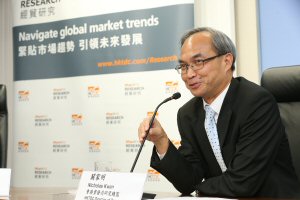
The press conference also announced that the HKTDC Export Index for the first quarter of 2019 rebounded four points from the previous quarter to 39.2 as confidence among exporters grew across all sectors and markets. “Progress in the trade talks between Mainland China and the United States has led to an improved sentiment. However, it is still expected the dispute will not be resolved imminently, so we are calling on local exporters to expand their business into new markets such as the Russian Far East and ASEAN countries,” said HKTDC Director of Research Nicholas Kwan.The HKTDC Export Index gauges near-term export prospects. Readings above and below 50 indicate positive and negative sentiment respectively. Mr Kwan noted the indices remained below the watershed mark of 50 but expansion has been satisfactory, especially in the toys sector and European Union market, which rose 17.1 and 5.6 points respectively. “Our forecast for export growth in 2019 remains unchanged – an increase of 5% in value and 3% in volume,” he said.
Machinery is the most promising export sector, with a score of 42.2 points, followed by toys (41.4) and electronics (39.7). In terms of specific export markets, Japan (48) and the EU (47.4) enjoyed the most positive short-term market outlook, followed by the US (46.1) and Mainland China (45.7), Mr Kwan added.
Orders from US buyers
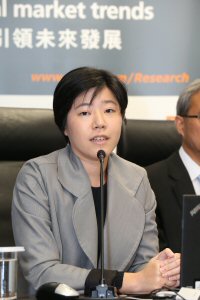
HKTDC Economist Doris Fung said Hong Kong exporters were slightly more optimistic than before on the outcome of the Sino-US Trade dispute. Fewer respondents – 51.7%, compared with 54.4% in the last quarter – were concerned that it might adversely affect their export performance over the near term.Nevertheless, despite the increase in optimism, almost half of respondents (48.5%) reported they had already experienced a negative impact related to the trade dispute, particularly in relation to reduced order sizes (69%). Other impacts include price bargaining (34.9%), cancelled orders (22.7%) and sharing or bearing part of the tariff costs (16.2%).In view of the trade friction, over half of respondents (54.1%) said they had considered developing markets outside the US. Other plans included moving the production or sourcing base (27.4%) and downsizing the company (19.9%).
Related links
Belt and Road country profiles
Historical data of the HKTDC Export Index
US trade resource page
